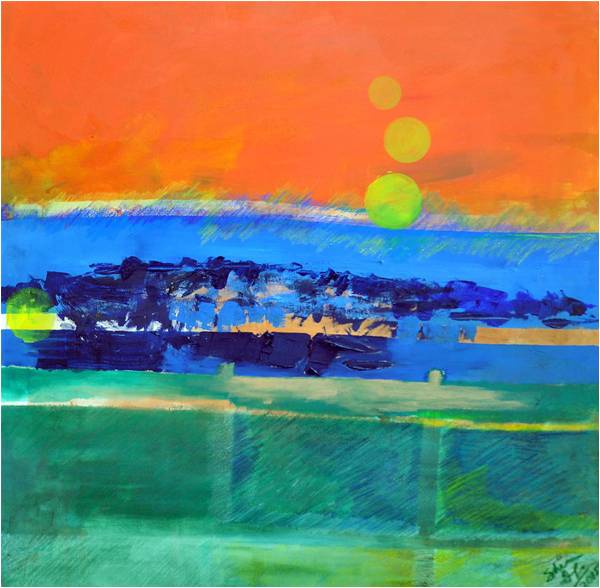
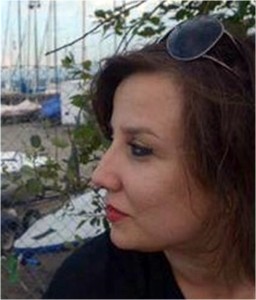 Swiss-German artist Paul Klee said that, “a picture will move far away from nature and yet find its way back to reality.” I am in conversation with artist Shireen Ikramullah at the opening of “Hybrid Theory” at the Full Circle Gallery in Karachi. The exhibition features both her work as well as that of Abid Hasan, another emerging artist. The faculty of memory, says Ikramullah, produces “pictorial associations”. Scherazade Junejo, artist and curator of the exhibition, chimes in, saying that, for the two participating artists, both nature and hybridity play an important role.
Swiss-German artist Paul Klee said that, “a picture will move far away from nature and yet find its way back to reality.” I am in conversation with artist Shireen Ikramullah at the opening of “Hybrid Theory” at the Full Circle Gallery in Karachi. The exhibition features both her work as well as that of Abid Hasan, another emerging artist. The faculty of memory, says Ikramullah, produces “pictorial associations”. Scherazade Junejo, artist and curator of the exhibition, chimes in, saying that, for the two participating artists, both nature and hybridity play an important role.On entering the gallery, I am struck initially by the bright colours of Ikramullah’s work, which compel one to come closer and observe her paintings. Her work is offset by Abid Hasan’s dark canvases, which appear to “weave” together symbolic strands of black and gold. Although Ikramullah’s paintings initially appear to be abstract – bright, unidentifiable forms – five minutes of closer observation transforms them into landscapes. Here, she makes a subtle, yet bold, foray into nature. A Page From My Diary II speaks of memories when combined with one’s own interpretation of the painting. The power of colour in Ikramullah’s work is so strong that it automatically propels one towards nature and away from the constrained white-cube gallery space.
Ikramullah's paintings "express an indisputable feeling that all living things are interconnected and inseparable"
Many of her paintings consist of circles, in which she draws heavily on Jungian psychology. For Jung, the circle symbolized both the Self as well as Nature, and this metaphor pervades almost all Ikramullah’s works. Her use of psychology in the creative process distinguishes her work from that of others. With the circles representing the Sanskrit mandala or “magic circle”, these paintings express the artist’s intuitive movement towards wholeness. Like Klee, she, too, delights in the use of bright colours and nonrepresentational forms.
Ikramullah’s work reflects her fascination with nature, peace and serendipity. A Page From My Diary IV could be an illustration of her memories of a recent visit someplace. Landscapes in reality may bear no resemblance to those in Ikramullah’s paintings, but they give flight to one’s own imagination and interpretation. They could exist, one thinks. The pink-and-orange sky and the dark-blue water in A Page From My Diary IV takes the form of a mysterious, almost alien, landscape. For Ikramullah, “painting is a language through which I have been able to express an indisputable feeling that all living things are interconnected and inseparable.”
Hasan uses the language of warp and weft to illustrate his moods
Telling me more about her multi-shaped, multi-coloured canvases, Ikramullah says that painting with different colours and shapes is her way of conveying emotion. Improvisation II is another instantly eye-catching piece. Using darker colours, thick strokes of paint and circles, it speaks to one in meditative tones closer to nature. It looks like an intangible form coiled into the padmasana or lotus position in yoga.
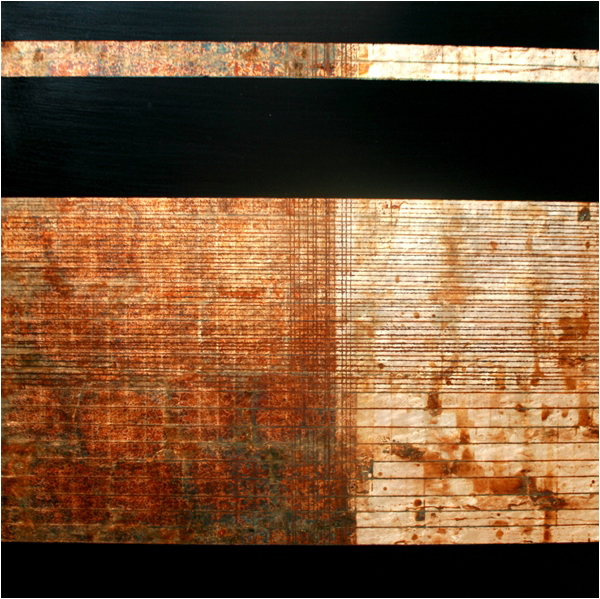
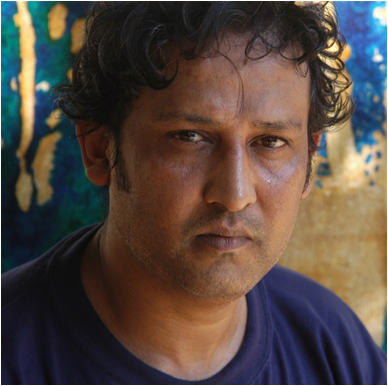
Abid Hasan’s work, on the other hand, consists of several canvases ranging from dark pieces to interlaced networks of gold and black, which he says are inspired by “weaving: a lifestyle, process and way of living.” What should one make of this term, I wonder to myself – “life weaving”. One interpretation is that of the “struggle” inherent in the long, painstaking process of weaving. Thus, the lines in each artwork are closely knitted together, but without obscuring the background.
Hasan tells me that the gold in his work represents the beauty of life and all the positivity in the world; the black represents evil, sorrow and negativity. The metaphor is thus the struggle between evil and good. And yet, while all his pieces use the same language, they each tell a different story.
For instance, in Weaving Life I, the gold and white in the background, when combined with the foreground, create an ambiguity: an almost unclear pictorial representation of figures and landscape. With the lines being drawn close to – and then farther from – each other, it is almost like an image is being woven in front of the observer’s eyes. Hasan uses the language of warp and weft to illustrate his moods.
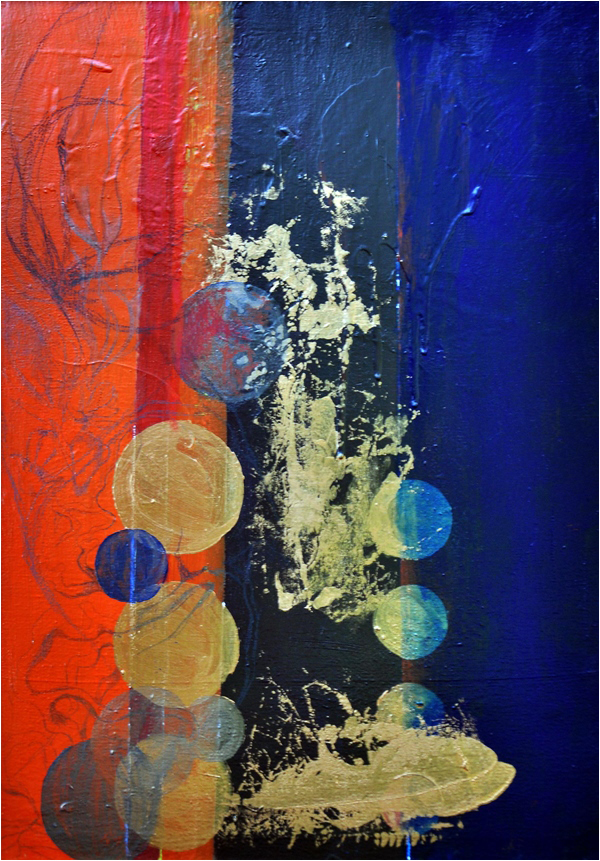
Weaving Life IV stands out from the rest, not only because its colour palette is different, but also because the lines are drawn differently. Most of his work comprises only horizontal lines, but this piece is a combination of both the vertical and the horizontal. As he says, “My works also illustrate my journey of self-discovery: how different revelations affect my works, how I weave colours and patterns into my paintings according to my mood”.
Of course, the paintings compel different interpretations: is the gold emerging from the black or is the black overlapping with the gold? Or perhaps the gold is moving towards the rusty and antique. It is here that the artist uses this medium for self-analysis: his struggle between the gold and the black or the good and the evil. Between Ikramullah’s bright colours and Hasan’s dark canvases – and the work aptly displayed – both artists leave the viewer pondering.

